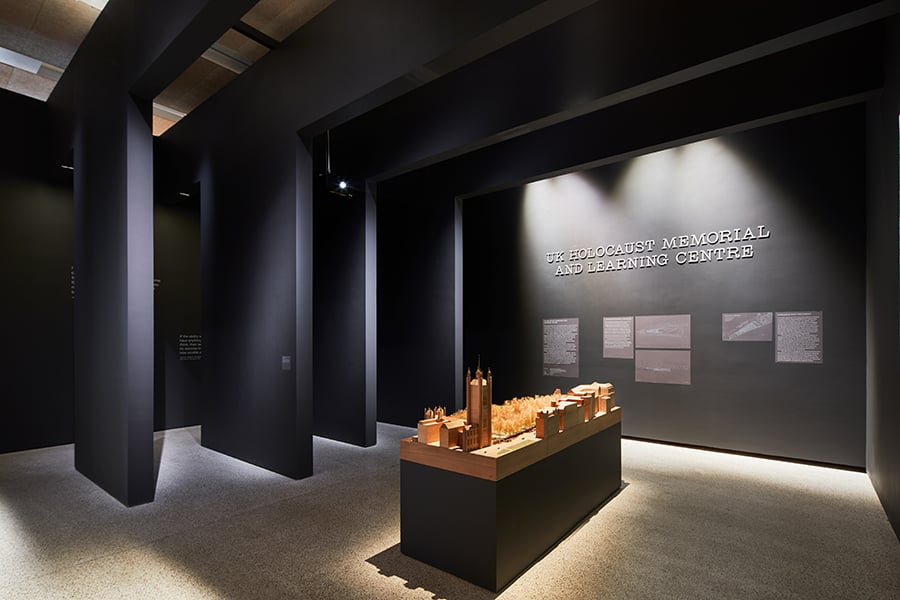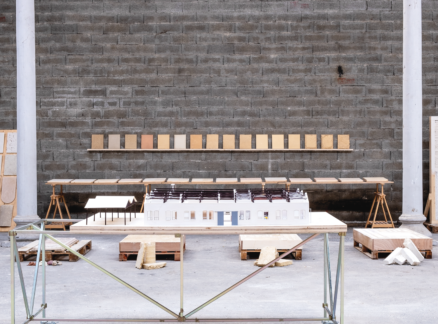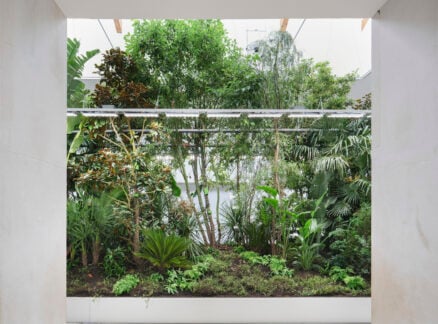
February 12, 2019
With a New Design Museum Exhibition, David Adjaye Focuses on Monuments and Memorialization
While it offers some engaging installations and artifacts, David Adjaye: Making Memory struggles to broaden its scope beyond Adjaye’s work and interrogate memorialization in today’s culture.

Housed in the awkward basement corner of London’s Design Museum, David Adjaye: Making Memory gets off to a good start. A wall of black and white photographs displays a visual typology of monuments and memorials from Stonehenge (c. 3000 B.C.E.) through to the National September 11 Memorial (2011 C.E.). Across tombs, obelisks, arches, statues, and harder-to-categorize monuments, such as Peter Eisenman’s Memorial to the Murdered Jews of Europe in Berlin, the exhibition’s first wall situates the varying ways through which collective memories are inscribed on the built environment, all while steering clear of Adjaye’s work. While Making Memory eventually showcases seven Adjaye Associates projects, the exhibition is not “just” a retrospective, stressed Adjaye and Dejan Sudjic, director of the Design Museum, at the opening. According to Sudjic, the exhibition is a “very different, very fresh idea” that follows the thread of memory through the career of the British-Ghanaian architect by focusing on projects, built and otherwise, that have memorialization at their core.
The exhibition does benefit from exploring its projects in detail: each of Adjaye’s works in Making Memory are given their own room designed by the team at Adjaye Associates. Beginning with the Gwangju Pavilion, a reading room constructed in memory of protesting students massacred during uprisings in South Korea in 1980, a heavy, matte-grey palette creates a fittingly somber environment for the topics at hand. Alongside models and video clips of Adjaye describing the project, a huge 1:1 replica bookcase from the pavilion occupies the space, thereby establishing a relationship between physical artifact and architecture that is repeated through the exhibition to great effect.

In the second room, for example, the controversial Holocaust Memorial (to be built next to the U.K. Houses of Parliament) is represented by wooden fins that break up the space, echoing the architecture of the memorial itself. The fins draw visitors to a model of the site and renderings projected onto a screen. Similarly, the Sclera Pavilion, a structure for London Design Festival 2008, is evoked by a hardwood installation that crawls up the wall and ceiling, bringing dappled light into the space. Moves such as these create an architectural experience neatly contained within the exhibition rooms.
Unfortunately, it’s a thread that is left unfinished. Moving on to the National Museum of African American History and Culture, surely Adjaye Associates’ greatest work to date, the exhibition design resorts back to simple display. It is a delight to see the prototype designs of the bronze filigree cladding up close, especially for those who haven’t been to Washington, D.C., but from this point the exhibition starts to resemble ‘just’ a retrospective a little too closely. Sketches in cases sit alongside intricate models and research artifacts for the proposed National Cathedral of Ghana and Mass Extinction Memorial Observatory—projects which are sure to be highly impressive but fall flat in the exhibition space.

More interesting is the final project, a proposed Coretta Scott King and Martin Luther King Jr. Memorial “in the heart of one the most important American landscapes, Boston [Common],” as Adjaye describes. Featuring an experimental typographic project by artists Adam Pendleton and David Reinfurt, the proposal aims to reflect the inimitable oration of the Kings and appears more as a landscaping project than a traditional memorial.
The Coretta Scott King and Martin Luther King Jr. Memorial seems a fitting tribute in its invocation of contested public spaces, something so central to discussions around memorialization which are ultimately missing from the exhibition. In an era of vital debates around statues of Confederate soldiers and #RhodesMustFall, Adjaye seems to have missed on opportunity to broaden the focus of the show from his own work to a wider contemporary context. The promising start, an interrogation of how we build memory, collapses into ‘just’ a retrospective—a forgettable one at that.
You may also enjoy “Foster + Partners Cultivates Sleek Modernism and a Tropical Landscape at Florida’s Norton Museum.”
Would you like to comment on this article? Send your thoughts to: [email protected]
Recent Viewpoints
Viewpoints
Sustainability News Updates for Q2 2025



















